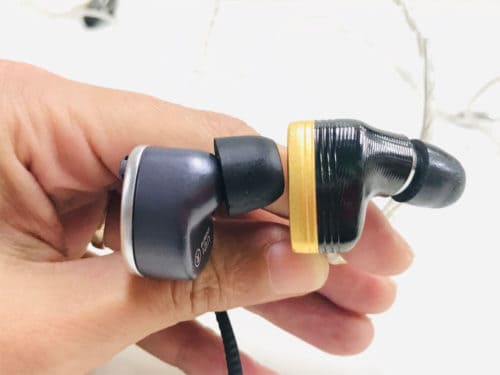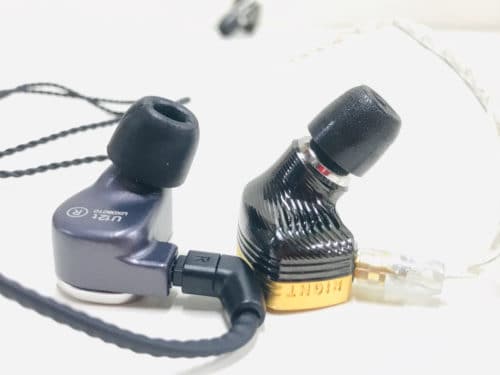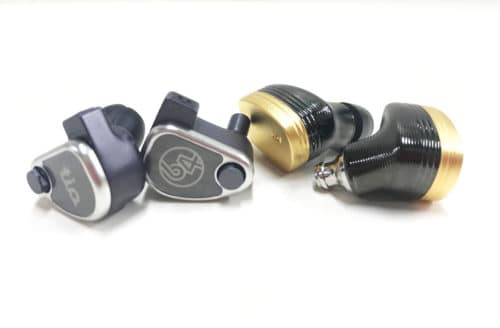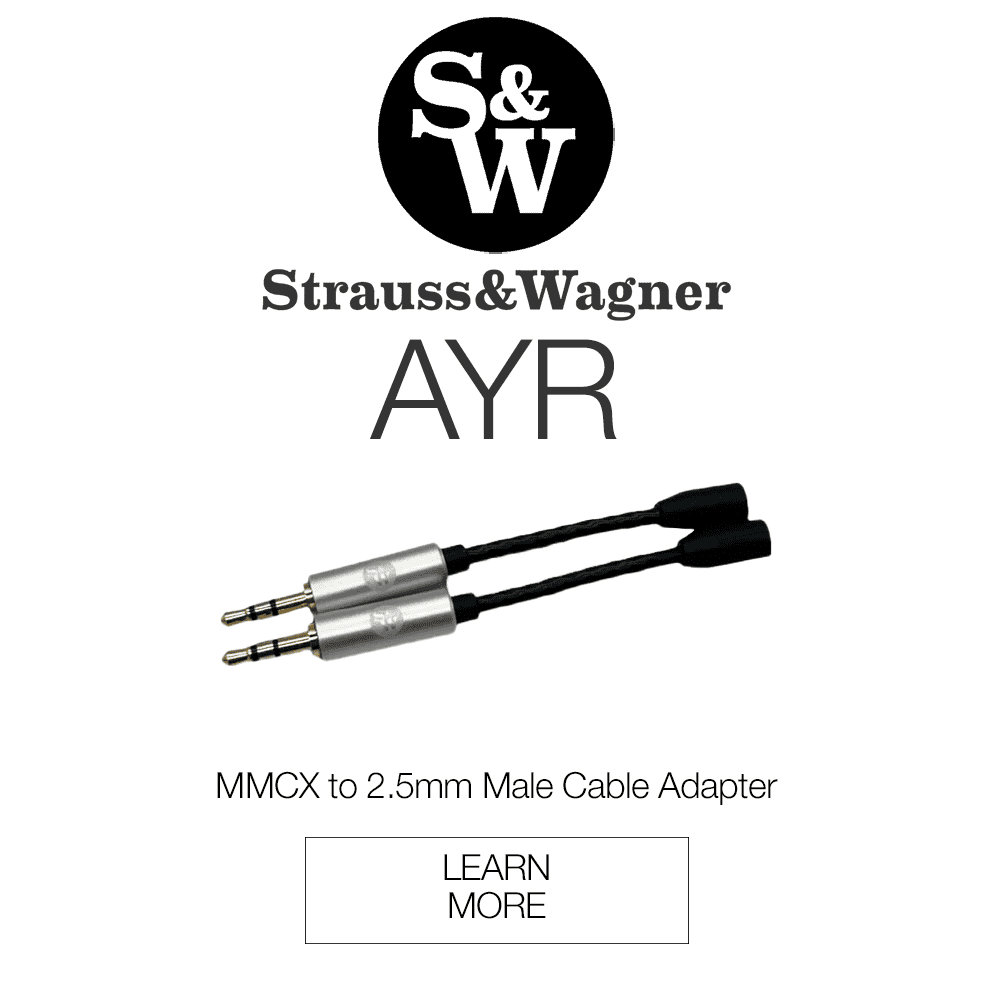If you’re about to drop $1500 to $2000 on a pair of IEMs, it’s nice to know you’ve chosen the right one. Both, the Campfire Solaris and 64 Audio U12t are big sellers. And much has already been written about both models. So, this review is for the folks who are already familiar with one of these IEMs but need a comparison to get a better sense of the sound signature they’re looking for. Which sound profile and shell design will suit your ears? Let’s take a look in this 64 Audio U12t vs Campfire Solaris Review.
64 Audio U12t vs Campfire Solaris Review
FIT
If you’re worried about getting the right fit, then worry about the Solaris. The shells are massive. And coming from an audiophile who rarely complains about fit, I have to say, the Solaris did not agree with my ears. There was some serious chafing going on. And I’m not referring to my thighs. In contrast, the fit on the U12t felt comfortable and unobtrusive. And even after wearing them for a couple of hours, I suffered minimal fatigue.


DESIGN
The biggest difference in this category is the amount of drivers packed into these two IEMs. The U12t boasts a whopping 12 drivers (1 high, 6 mid, 1 high-mid, 4 low), all balanced armatures. In comparison, the Solaris is a hybrid design, offering only 3 BA drivers for the higher frequencies and a dynamic for the lows. But as my grandmother always said, more drivers don’t always mean better sound.

At 5Hz – 20kHz, the Solaris has a wider frequency range than the U12t, which is at 10Hz – 20kHz. But numbers can be misleading. So, we’ll see how this translates to sound below.
The other big difference is the sensitivity. Though both models will give you ample volume from even your mobile device, the Solaris is much easier to drive than the U12t. So much so, in fact, that I almost blew my ears out when I switched between them. So, there goes my career. Seriously folks, be very careful with Campfire IEMs. Turn the volume all the way down before you test them. If you like to listen at dangerously loud volumes, the Solaris will blow you out of your chair. Ouch. A really stupid move on my part.
The cable connections also vary. While the U12t uses a 2-pin connection, the Solaris employs an MMCX connection. The jury may still be out, but most audiophiles are confident that the 2-pin connection is better in terms of longevity. And considering the added thickness and solidity of the U12t’s 3.5mm termination, I’d put my money on it.



SOUND
Lows
I was surprised in this range. I expected the bass on the Solaris to have more power and depth than the U12t. Not the case; listening to pop, the U12t displayed a little extra bass presence and impact. And because the U12t reveals more subbiness, it brings added grandeur to the low end. There’s not a huge contrast, but listening to hip-hop, the difference becomes more discernible. And if you’re looking for a warmer low-end on your rock and pop-rock tracks, the U12t is a better choice as well. But in terms of detail, the Solaris has more transparency, while the U12t presents a smoother sound. Listening to cellos in this range, for example, the Solaris revealed more texture and grip, while the U12t brought more fluidity to the note progressions.
Mids
Don’t expect a particularly stark difference in balance in this range. However, the Solaris does have a slightly more dynamic profile, displaying a bit more emphasis in the higher mids. So, vocals tend sit more forward, and the contrast between the low and high frequencies is more pronounced. For example, pop feels a more colored on the Solaris, while the U12t sounds somewhat flatter, giving more body to rock and pop-rock tracks.
But I have to say, the Solaris definitely wins in terms of separation. And listening to heavy arrangements, the layering felt much more delineated on the Solaris than it did on the U12t. In fact, in this respect, the Solaris is superior to any other IEM I’ve tested under $2000.
Highs
You can expect more snap and sparkle from the Solaris. Percussion in this range,for example, sounded more crisp on the Solaris than it did on the U12t. And while both IEMs share a similar level of transparency in this range, the Solaris displayed a thicker or more colored presentation of string instruments. In contrast, the U12t was a bit more delicate and tempered. And listening to female vocals, the U12t revealed more breath and airiness, while the Solaris had a richer, more velvety feel.
Soundstage
Wow. The Solaris does it again. I used to swear that no one does a bigger soundstage than 64 Audio. But you’ll certainly hear a grander, more spacious feel from than Solaris. The extra reverb on the Solaris seems to add to (or even cause) this effect. That being said, while the Solaris offers vastness, the U12t displays impeccable precision with respect to imaging. Gradations is height and depth were more accurate on the U12t. So, on some tracks, the U12t felt a more multidimensional than the Solaris.
SUMMARY
This is a tough choice. And the only factor that makes the decision easier is the fit. Despite the Solaris’ superior separation and bigger soundstage, I personally cannot commit to an IEM as large as the Solaris. That being said, everyone’s ears are different. In fact, I’m sure that there are many happy Solaris owners who have zero complaints with respect to comfort. And though I’m a sucker for the incredibly accurate imaging offered by the U12t, the Solaris shows off more skill overall. However, if warmth is more important to you than clarity, the U12t may be a more suitable option.
You can find both of these IEMs for the best price here:
Join the discussion about “64 Audio U12t vs Campfire Solaris Review” to find out what other Majorhifi users are discussing, debating and asking.

Compare the ranking of various headphones, earbuds and in-ear monitors using our tools.
Discuss this, and much more, over on our forum.
---MAJORHIFI may receive commissions from retail offers.















